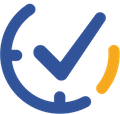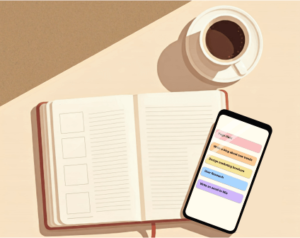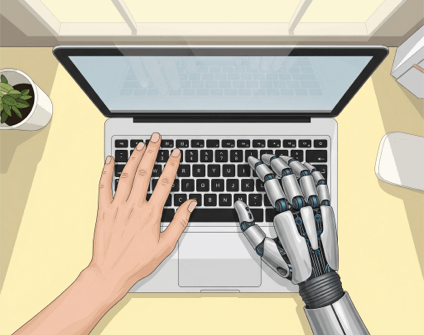In the age of productivity, finding the right system to organize your life is key to getting more done. If you’ve ever wandered into the world of productivity, you’ve likely come across two powerful methods: traditional bullet journaling and digital task management apps. But which one fits your needs? The answer isn’t so simple—it depends on your preferences, goals, and the way you like to manage your tasks. Let’s dive into the strengths of each and help you decide which approach best suits your style.
What is Bullet Journaling?
Bullet journaling, or “BuJo,” is more than just writing tasks in a notebook—it’s an analog system that combines a planner, diary, to-do list, and habit tracker. Developed by Ryder Carroll, it’s a flexible, customizable method where you create your structure and design according to what works best for you. The appeal of bullet journaling lies in its creativity and mindfulness. You can personalize every page, track your goals, set future logs, and reflect on your accomplishments. For many, it’s an art form, bringing a tactile, hands-on experience to productivity.
“The discipline of writing something down is the first step toward making it happen.” – Lee Iacocca. This quote resonates deeply with bullet journalers who believe the act of physically writing helps to solidify goals and boost productivity.

Strengths of Bullet Journaling
1. Customizable & Creative: You control the design and structure. Whether you want minimalistic spreads or highly detailed layouts, a bullet journal lets you express your personality while organizing your life. For people who enjoy a creative outlet or find joy in artful expression, bullet journaling can be a soothing ritual.
2. Freedom from Technology: In an era of constantly being bombarded by notifications, bullet journaling is a refreshing escape from screens. It gives you space to slow down, unplug, and focus entirely on what’s important without distractions.
3. Track More Than Just Tasks: Bullet journaling isn’t just about to-dos. It can be used to track habits, log your moods, jot down memories, or plan meals. You can make it as comprehensive or as simple as you like.
4. Mindfulness & Reflection: Each day, week, or month, you reflect on your tasks. Did you accomplish what you set out to do? What held you back? What should be carried over? This self-awareness cultivates a habit of prioritizing what truly matters.
When is it Ideal?
Bullet journaling might be the right choice for you if you thrive on creativity and mindfulness. It’s a perfect fit if you love the tactile feel of writing or find yourself distracted by too much screen time. For individuals who manage fewer tasks or those who prioritize mental clarity over efficiency, bullet journaling can be a powerful tool.
Here are a few tips for maximizing your bullet journal:
– Stick to a Routine: Set aside time each day or week to update your journal. This builds consistency and makes sure you don’t fall behind.
– Mix Functionality with Fun: While bullet journaling is useful for tracking tasks, it’s also a great way to relax and express creativity. Feel free to doodle, use colors, and make it your own.
– Don’t Overcomplicate It: Some people get lost in the design aspect and forget that the main goal is productivity. Start with simple layouts before adding more creative elements.

What is Digital Task Management?
On the flip side, digital task management apps have taken over the productivity world in recent years. With apps like Planndu, Todoist, or Trello, managing tasks has never been more streamlined. These apps allow users to set reminders, schedule recurring tasks, collaborate with others, and sync across multiple devices. Whether you’re managing a small personal project or a large team, these apps offer functionality that simply can’t be matched by analog methods.
“Productivity is never an accident. It is always the result of a commitment to excellence, intelligent planning, and focused effort.” – Paul J. Meyer. This perfectly sums up the appeal of digital tools, which are designed to optimize time and maximize efficiency.

Strengths of Digital Task Management
1. Automation & Reminders: One of the greatest strengths of digital task managers is automation. You can set due dates, prioritize tasks, and receive reminders—whether it’s a daily, weekly, or even a recurring task. Apps like Planndu even offer Pomodoro timer and focus sessions, helping you stay on track when needed.
2. Access Anywhere, Anytime: Unlike bullet journaling, which requires you to carry your notebook around, task management apps are accessible across all your devices. Whether you’re on your phone, laptop, or tablet, you’ll always have access to your to-do list. This is especially helpful for people who are always on the go or prefer working in multiple locations.
3. Collaboration & Sharing: In today’s team-oriented work environment, collaboration is key. Planndu, for example, allows you to assign tasks, share lists, and collaborate on projects in real time, which is nearly impossible with a traditional journal.
4. Data & Analytics: Many digital tools also offer progress stats, tracking how many tasks you’ve completed and how long certain tasks take. Some apps give badges or rewards when goals are met, which can keep you motivated. Tracking this kind of data helps you evaluate how effective your current system is and make necessary improvements.
When is it Ideal?
If you’re someone who handles a lot of tasks or juggles multiple projects, a digital task manager might be your best option. These tools help with organization, remind you of deadlines, and allow for seamless collaboration—perfect for professionals or individuals looking to manage personal and work projects simultaneously.
Here are some tips for making the most of a digital task management app:
– Leverage Recurring Tasks: Set up recurring tasks for daily or weekly chores to avoid re-entering them every time. This feature is often underused but saves tons of time.
– Take Advantage of Integrations: Task management apps can integrate with calendars, email, and other tools to provide a seamless workflow. Maximize these integrations to keep everything connected.
– Prioritize & Categorize: Use color coding, priority labels, and statuses to distinguish important tasks from less urgent ones. This will help you focus on what matters each day.

The Verdict: Which One Suits Your Style?
There is no one-size-fits-all answer. Bullet journaling excels in promoting mindfulness, creativity, and reflection, while digital task management apps are unbeatable when it comes to automation, accessibility, and collaboration.
If you’re the type of person who loves putting pen to paper and values a hands-on, mindful approach, then bullet journaling may be the choice for you. On the other hand, if you prioritize efficiency, need to collaborate with others, or handle a large number of tasks, a digital task manager like Planndu will suit you perfectly.
At the end of the day, productivity is deeply personal. Some people even choose a hybrid approach—using a bullet journal for mindfulness and reflection while relying on digital tools to manage their day-to-day tasks.

Ready to streamline your productivity? Download Planndu today and take advantage of its powerful features to organize your tasks, set reminders, track progress, and collaborate effortlessly. Whether you’re managing a personal tasks or working on small projects, Planndu is designed to help you get more done with less hassle. Start your journey towards smarter task management now!




